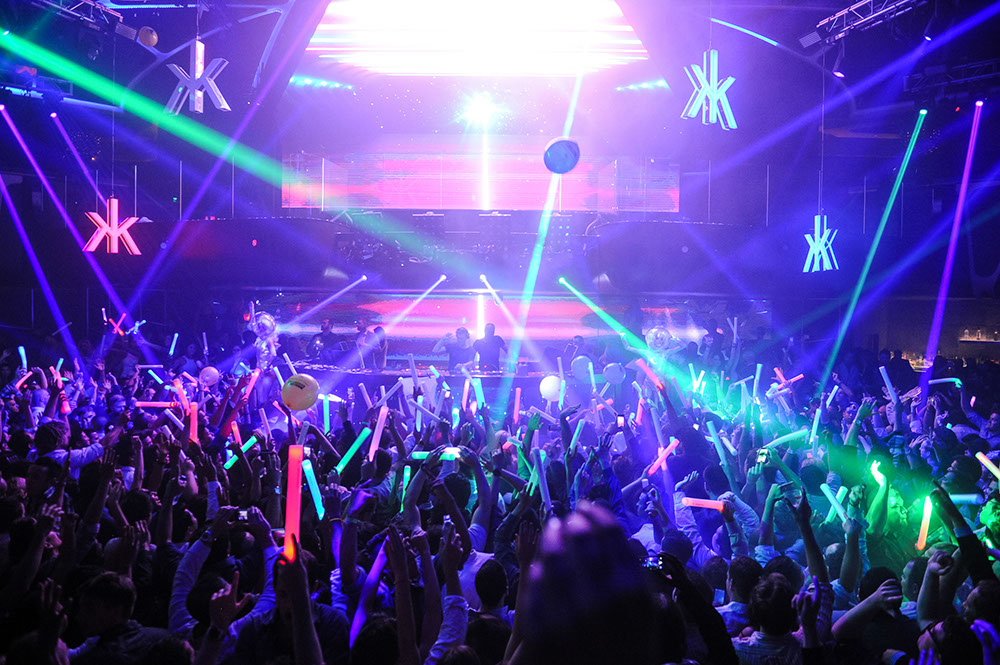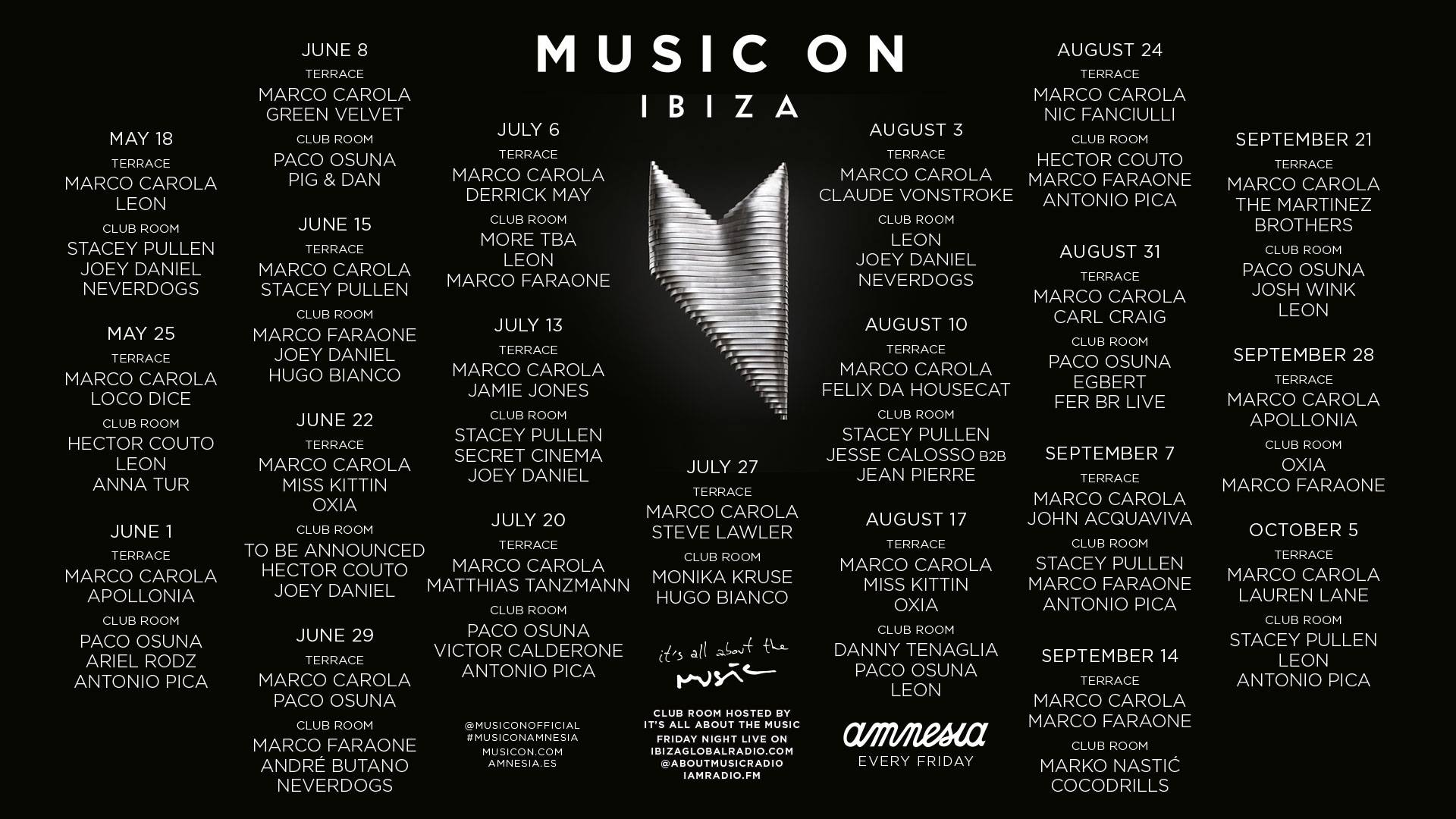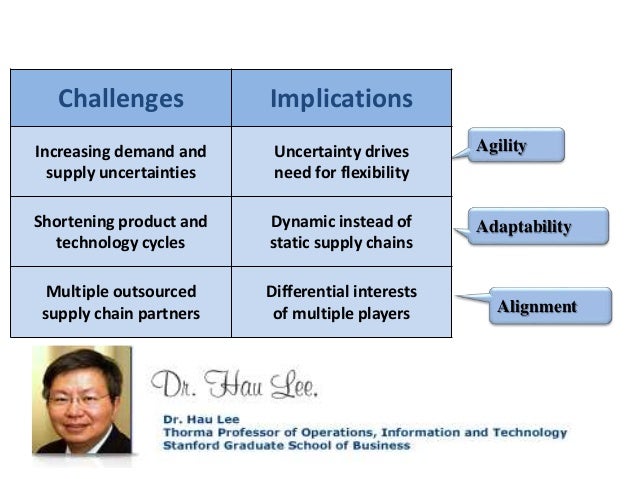
The Nightclub Industry
Pietro Dalla VedovaMiM S6 - Sept. 2018 intake Operations & Supply Chain ManagementWelcome to my Mind Map on the Nightclub Industry!I have chosen this topic because this industry is highly profitable but, in my opinion, more complex that what it looks from the outside. The service it provides is mainly music, but all the complementary services play a fundamental role in customer satisfaction. Therefore, the focus of this Mind Map is on how nightclubs manage to adapt to customer preferences, and retain customers, in a sector where customer loyalty is notoriously very low.This Mind Map will start from analysing Customer Experience Management, the main issue for nightclubs. It then looks at operations management, at the importance of high quality service and finally at stock management. I hope you enjoy this Mind Map!
Introduction
There are some initial demand-side observations that must be made to correctly understand the dynamics of nightclubs.Firstly, nightclubs provide luxury services: no-one "needs" them, they are a form of economically and also physically expensive entertainment, with a high opportunity cost: sleep, or other better places. This industry sees very little customer loyalty.Secondly, nightclubs have to target very carefully their preferred audience, and normally segment by age, gender and economic availability. People must be "similar" in the club.This is because the nightclubs’ service needs to be an exclusive experience, always ahead of time.Be careful! Nightclubs are not just dance clubs: they include adult clubs, comedy clubs... but this report will focus on music venues.Therefore the greatest focus is on consumer satisfaction: people in the nightclub need to have everything they want, quickly and efficiently. And clubs constantly adapt to changes in taste. The video attached will briefly touch upon what is needed to start a nightclub: a vision, excellent service and lots of determination. Results will come!
Customer Experience Management
The nightlife industry is completely customer-centric; and customer satisfaction is qualitative, not quantitative. The customer journey is carefully studied all throughout, and nightclubs need to transmit feelings and emotions. This topic looks at the main qualitative aspects that nightclubs have developed recently to differentiate themselves and refine the unique experience that they offer to their customers.
The WOW factor
The "wow" factor is the event that people who attended a club need to talk about the following morning. It is the experience that you can find only in that club, on that night.Simply announcing special guests or throwing a themed party e.g. for Halloween is simply not enough. For example, Cirque Le Soir in London stops the music at 2a.m. for 15 minutes: it offers a special "sexy and perverse" ballet with men and women performing unusual exotic, scary dances. There is high interaction with the public as often the dancers perform their stunts with (or on) clients, and also later serve drinks. After 15 minutes, the music restarts and the night goes on.(The video is the club's promo - it has the "Parental Advisory - Over 18 label!)Other "wow" factors could include the club's design to hear the music better, personalised orders such as food at your table in the club, or any additional service that becomes unique and a trademark to that club.

partnerships
Many brands are associated to the nightlife and have based their marketing strategy on clubbing. Nightclubs can benefit from this too, partnering with high-quality alcohol brands, or with "Resident DJs" for the season. This guarantees the clients music and drinks quality in the clubs, associating their brand to internationally known ones.The Image shows the marketing campaign for Amnesia nightclub in Ibiza, and its resident DJ Marco Carola with his personal brand Music On. This is a typical case of partnership in the nightlife industry.
Queue Management
Many people believe the queues to be the biggest bottleneck in nightclubs' operations. This is absolutely not true.The best clubs in Europe normally earn 75% of their revenues from bottles at their tables: these people often have a special entry door.If clubs wanted to maximise profits for one night, they would organise only tables, but an empty club does not look good. They do not care of "normal entries": these are needed only to fill the dance floor. At this stage, selection occurs: many people are rejected based on age, gender and economic availability.But there are many psychological factors to maintaining a queue. Firstly, it looks like many people want to go there. The exclusivity factor is a major one for a service industry. It is also well known that queues increase anxiety and, by queuing long minutes, it convinces people that once you get in, you want to enjoy even more your time - by buying more alcohol.Also, the next time, people will realise it is not worth queuing for so long, and will be willing to spend more money to get a table.In other words, the best nightclubs want queues - and will intentionally slow down the flux of people to play with this psychological effect.(Video on long queues at Drum&Bass event in London - showing reactions of people in line. More generally showing how queue management has not changed with time)
Stock Management

Inventory control
Nightclub inventory normally holds only finished goods. Inventory should be controlled at least weekly, if not after every single event carried out. The reasons are that, despite demand being fairly stable if the events hosted are fairly similar, there might be slight variation and a nightclub cannot finish its stock e.g. of Vodka half-way through the night.Controlling inventory is the true way to be profitable: as mentioned ERP can prove fundamental to track past variability, but the real issue is with FORECASTING.Forecasting helps identify seasonal or cyclical variations, general trends, and other random variations to ensure that the inventory is always up-to-date and necessary products are available.Despite contrasting with Lean mentality, nightclubs experience variation especially if they host events with different customer targets e.g. a "Raggaeton night" then a "Hard techno" night. This means they need to have large stock always available.The attached graph shows the main actions to be taken when forecasting and maintaining an inventory.

Resilient Supply Chain
As we have seen, 75% of companies experience at least one major supply chain disruption a year. Unforeseen events happen, and as the word suggests, they are unpredictable. This means that businesses always need to be prepared to cope with these emergencies.The easiest measure for nightclubs is always to have extra reserves of their products. Luckily, alcohol does not perish quickly, so this is potentially viable, but expensive. Also, diversifying suppliers could be a solution, but normally only the largest nightclubs can do this; smaller clubs are sometimes forced to exploit economies of scale and buy large bulks.Cooperation and employee training can help too, to understand where the major problem comes from and to tackle it quickly. This is why an employee hierarchy and training is useful: people know their responsiblities.Nightclubs try to have a Triple-A Supply Chain: while adaptability and alignment can be obtained in the long-run, the major struggle comes with Agility in the short-run. Coping with volatility and uncertainty can be the major competitive advantage for nightclubs.
Operations &...
The number of nightclubs in the world has increased by more than 10% every year between 1970 and 2000. This number is now stagnant: competition has reached a peak and clubs need to differentiate.Operations are fundamental to survive competition. This topic explores the main features of operations management in nightclubs.
Strategy Alignment
The article attached talks about a clear vision and mission of a famous nightclub in San Diego, CA, and their focus on top-end quality services for their guests.-----The vision of a nightclub is fundamental to understand the targeted customers, the prices to charge, the number of events and their date, the location to choose, the music, the atmosphere...Operations need to be carefully designed to fit the overall vision of the nightclub. They need to reflect also the culture of the business. For example, the customer journey must be aligned and "teach" the customer the values of the nightclub. Decisions like: paying at entrance or at the end of the night? Providing "VIP" areas for consumers who pay more? Serving people in glass or plastic cups?... are fundamental in this respect.But also the management of stock, adoption of technology , HR, preparing the schedule and many other features are all fundamental. This Mind Map will analyze them later too.

Innovation
The difference between operational innovation and improvement in this industry has been evident especially in the last decade. "Behind the scenes", the breaking down of silos (operational integration) was a breakthrough in the nightlife industry. Powerful ERP systems have helped enormously, since data collection from consumers is becoming vital.For marketing, nightclubs are now active on social media, organising large Facebook events, targeting people who tagged themselves in their club or at similar events. Or, offer special deals to a regular consumer to build customer loyalty - the person is recognised by his/her personal information, credit card number...This is especially useful when managing inventory for drinks, to ensure the most requested ones are always available; and improving coordination between staff, which is notoriously difficult with loud music playing and in the dark .Technology also allows to collect, store and process data from both customers and employees, to improve customer experience management, and service quality management - allowing for greater adaptability to the customer preferences.All of this then has consequences on the allocation of the budget and in general it improves the communication in the business, giving voice to all departments and helping to deliver better the values and executing the business.
Delivering Excellent Service
The nightclub industry depends on human interaction, powerful feelings and "unforgettable" experiences. This means that consumers must be followed constantly during their journey.In loud, crowded and dark clubs, efficiency must be a priority when delivering services. Nothing annoys consumers more than having to order repeatedly the same things because employees do not understand or forget.Similarly, queuing to enter the club, then at the cloakroom, and then to order drinks can be nerve-wrecking and time consuming - leading consumers to order less drinks and the club to lose potential revenues.Delivering excellent service is not easy - just consider how difficult it is to move between the crowd of people! The trick is constant training and a well-thought service strategy. This topic explores them better.
Lean Services
The Lean techniques derive primarily from the Toyota Production System (TPS) developed in the early 1990s, which boosted the company's growth and gave incredible insight into production efficiency.In the Mind Map, we apply lean manufacturing concepts to service operations: generating maximum value for the customer with minimum waste.Lean services are an efficient strategy to maximise the potential of nightclub. For example, employees need to go to the tables twice for the same order: to collect it, and to deliver it. By providing consumers with a whatsapp contact, U.S. clubs now eliminate the vocal aspect of ordering and directly bring drinks at the table. This allows for more orders to be taken, and less time to deliver them.The Harvard article attached contains interesting remarks on lean services, comparing them to lean manufacturing and containing important takeaways
aKaizen
Kaizen is a Japanese concept meaning "continuous improvement", taken from Toyota's TPS and applied to services as much as manufacturing.Through technology and data collection, standardisation, and other lean practices, kaizen can be implemented even on a daily basis, with minor but overall impactful changes.Also, improvement can come from employees, who carry out the tasks everyday and may have insights on how to improve operations. This could include suggestions on further integration between two departments, such as finances and inventory.A culture of improvement requires everyone to give their input. Employees feel more part of the company, since everything they do is valuable and important. It builds a better community, cherishing communication and the business' interest.The two subtopics explore Kaizen in depth.The video shows Steve Jobs talking about Kaizen and empowering employees.

Employee Training
This aspect is fundamental for efficient lean services.One trick is to have an employee hierarchy: someone must always be carrying out tasks, someone must always be ensuring that the correct tasks are carried out in a timely manner. Often in clubs, Area Managers can be found: they talk in small radios and call other employees to clean drink spillages or take orders from consumers who are waiting.Training is also about having cross-functional teams, to ensure that any emergency can be handled. So, standardisation is necessary but emergencies may require great flexibility in the assignment of tasks.In nightclubs, employee training comes useful also when it is time to close, normally in early morning. There is always some damage to things, and someone who complains. Delivering excellent service means also to handle these delicate moments to ensure that all clients have a positive memory of their last moment in the club.
Data collection
The collection of data with ERP, POS, or with any other means is progressively more important to optimise operations. People rarely know what they want, but there are patterns of consumption and behaviour that can be discovered.These patterns concern what drinks have been ordered most, and at what time; average bills; trends of bathroom lines, cloakroom lines; loudness levels; when the club starts to empty out. On the long run, data can reveal loyal customers, what days are most profitable; inventory patterns; employee efficiency, and many more interesting insights in the dynamics of nightclubs.Applying Kaizen is then simply a matter of understanding how to adapt better to customer requests, whatever that may mean. For example, with internet and streaming services from instagram, facebook etc., improving connection and wi-fi quality was a major step that had to be taken.Data collection could also improve the detection of violent behaviour in clubs: the attached article discusses what happened in London when this was implemented.
Lean Six Sigma
Lean Six Sigma is an interesting application of lean services with Six Sigma: the focus is on efficient collaboration, cooperation and communication to eliminate the 8 kinds of Muda (waste): defects, Over-Production, waiting, Non-Utilized Talent, transportation, inventory, motion, Extra-Processing.The intention is ultimately to improve the business model adopting Lean Six Sigma as a mentality, as part of the culture. Nightclubs have taken many insights from Lean Six Sigma, managing to allocate resources better, so reducing costs but not efficiency.Standardisation (Seiketsu) has been a major factor. By reducing variation, for example, better quality can be achieved. This concept is applied to music (specialisation in one music genre), inventory (focus only on drinks, not food; or offering certain drink menus), and services ( having clear procedures when dealing with consumers, speeding up services, specialisation of tasks).The attached PDF is the famous book: "Leaning into Six Sigma: The Path to Integration of Lean Enterprise and Six Sigma" (Wheat, Mills, Carnell 2001) - I recommend to read the Foreword by (at the time) Motorola's Director of Quality, John Lupienski, for insights on Lean Six Sigma in manufacturing. The concepts can easily be applied to Lean Services too.The video shows the importance of standardisation for employee and customer satisfaction, innovation, and sustainablility.
aFurther Article on Standardisation and Lean Services
The article attached brilliantly explains why standardisation is critical in lean services today, reflecting though on the degree of standardisation required: this may vary considerably on the industry. Nonetheless, in nightclubs the Lean Six Sigma mentality can bring huge productivity benefits since the first day it is implemented.
Main Takeaways
To recap, this Mind Map focused on customer experience management, operations management, service excellence and stock management in the Nightclub industry.The main takeaway is that this industry provides a luxury service, therefore customers demand great attention to their wants and an excellent reason to come back to that club.To satisfy customers, nightclubs try to provide a unique "wow" factor every single time, partnering with famous brands and creating a feeling of exclusivity around their events.They try to innovate all the time, with technology that helps consistently. But this does not come to expense to the broader vision and values of the club, which are necessary to provide something concrete to the customer.Similarly, service can be a major bottleneck for nightclubs. This is why lean services are fundamental in this sectors and Kaizen is a widely used concept to be more efficient. Finally, stock management can be the game changer in this competitive industry. Having an agile and resilient supply chain can ensure that the business is always ready to fully operate and always satisfy all customers....and this is it! Thank you for your attention, and I hope you enjoyed this Mind Map on the Nightclub Industry!!Pietro